
The Perfect Landing Page for Conversions - Suffari
Wondering how to design the perfect landing page for conversions? In the fast-paced world of digital marketing, where attention spans are fleeting and competition is fierce, the significance of a well-crafted landing page cannot be overstated. It serves as the critical gateway to converting casual visitors into loyal customers, making it an essential element of any successful online strategy. But what exactly makes a landing page not just good, but great?
Table of Contents
Unlocking Conversions: Suffari's Guide to Designing the Perfect Landing Page
Understanding the Role of Landing Pages in Conversions
Identifying Your Target Audience
Key Elements of a High-Converting Landing Page
Crafting Compelling Headlines and Subheadings
The Power of Persuasive Copywriting
Designing an Eye-Catching Layout
The Importance of Visuals and Multimedia
Creating Effective Call-to-Action (CTA) Buttons
Utilizing Testimonials and Social Proof
Implementing Trust Signals and Security Features
A/B Testing: Optimizing Your Landing Page Performance
Analyzing Metrics and Adjusting Strategies
Mobile Optimization for Landing Pages
Common Mistakes to Avoid in Landing Page Design
Case Studies: Successful Landing Page Examples and Takeaways
Dropbox: The Power of Simplicity
Airbnb: Leveraging User-Generated Content
Crazy Egg: The Art of A/B Testing
Shopify: Clear Value Proposition
Unlocking Conversions: Suffari's Guide to Designing the Perfect Landing Page
In this ultimate guide, we will explore the art and science of designing the perfect landing page that captivates, engages, and converts. From compelling headlines and persuasive copy to eye-catching visuals and strategic call-to-action buttons, we will break down the key components that can significantly enhance your conversion rates. Whether you're a seasoned marketer or just starting your journey in the digital landscape, this comprehensive guide will equip you with actionable insights and best practices to unlock the full potential of your landing pages and drive meaningful results for your business. Get ready to transform your online presence and maximize your conversions!
Understanding the Role of Landing Pages in Conversions
When it comes to converting visitors into customers, landing pages are your digital storefronts, playing a pivotal role in the customer journey. Unlike regular web pages that serve various functions, landing pages are designed with a singular focus: to encourage a specific action, whether it’s signing up for a newsletter, downloading a free resource, or making a purchase. This sharp focus is what sets them apart and makes them crucial for maximizing conversions.
At their core, landing pages are about simplification and clarity. They strip away distractions, guiding the visitor’s attention to a compelling call-to-action (CTA). This might be a bold button inviting them to “Buy Now” or a simple form encouraging them to “Sign Up for Free.” Each element on the page, from the headline to the images, should work harmoniously to lead visitors towards completing the desired action.
Moreover, understanding the role of landing pages extends beyond just their design. It’s about aligning your landing page with your marketing efforts. When potential customers click on a link from an ad or an email, they should land on a page that resonates with the promise made in that initial outreach. For instance, if you’re advertising a limited-time sale on a specific product, the landing page must prominently feature that product and the associated discount to fulfill the visitor’s expectations and encourage them to convert.
In essence, landing pages are not just a means to an end; they are strategic tools that can significantly boost your conversion rates. By understanding their role and designing them with intention, you can create a seamless experience for your visitors that guides them smoothly from interest to action. Whether you're looking to capture leads or drive sales, a well-crafted landing page can be the key to unlocking your conversion potential.
Identifying Your Target Audience
Identifying your target audience is a crucial step in designing an effective landing page that converts visitors into leads or customers. Before you even begin drafting your content or selecting visuals, take a moment to understand who your ideal users are. Consider demographic factors such as age, gender, location, and income level, as well as psychographic elements like interests, values, and pain points.
By creating a detailed buyer persona, you can tailor your landing page to address the specific needs and desires of your target audience. For example, if you’re selling a high-end fitness program aimed at busy professionals, your language, imagery, and value propositions should reflect their lifestyle and challenges. Highlight how your program can help them achieve their fitness goals in a time-efficient manner.
Furthermore, consider the stages of the customer journey your audience may be in. Are they just becoming aware of their problem, or are they ready to make a purchase? This understanding can help you craft compelling calls to action and persuasive content that resonates with them. Use language that speaks directly to their experiences and aspirations, ensuring that they feel understood and valued.
Additionally, conducting surveys, analyzing website analytics, and engaging with your audience on social media can provide you with valuable insights into their preferences and behaviors. The more you know about your target audience, the better equipped you will be to create a landing page that not only captures their attention but also compels them to take action. In a world where personalized experiences are increasingly expected, tailoring your landing page to meet the specific needs of your audience can significantly enhance your conversion rates.
Key Elements of a High-Converting Landing Page
When it comes to designing a high-converting landing page, understanding the key elements that drive engagement and encourage action is essential. A well-crafted landing page is not just an extension of your website; it's a focused, persuasive tool designed to convert visitors into leads or customers. Here are the critical components you need to incorporate to maximize your landing page’s effectiveness:
Compelling Headline: Your headline is the first thing visitors see, and it needs to grab their attention immediately. Aim for clarity and impact, your headline should succinctly convey the value proposition of your offer. Use strong, action-oriented language to spark curiosity and encourage further exploration.
Engaging Sub headline: Following your headline, the sub headline should provide additional context and reinforce the promise made. It serves as a bridge to the rest of your content, highlighting the benefits and enticing the reader to continue.
Persuasive Copy: The body copy of your landing page should be concise yet informative. Focus on the benefits of your product or service, addressing the pain points of your audience and demonstrating how your offering provides a solution. Use bullet points for easy readability and ensure that your tone resonates with your target demographic.
Eye-Catching Visuals: Visual elements, such as images or videos, can enhance the appeal of your landing page and illustrate your message. Choose high-quality images that are relevant to your offer and evoke the desired emotional response. A compelling video can also significantly boost engagement, allowing potential customers to better understand your product.
Clear Call to Action (CTA): Your CTA is the pivotal point of conversion on your landing page. It should be prominently displayed, using contrasting colors to make it stand out. Use action-oriented language that tells visitors exactly what to do next, whether it’s “Sign Up Now,” “Get Your Free Trial,” or “Download the Guide.” Make it irresistible!
Trust Signals: To alleviate any hesitation visitors might have, include trust signals such as customer testimonials, reviews, or trust badges. These elements build credibility and assure potential customers that they are making a safe and informed decision.
Minimal Distractions: A high-converting landing page should maintain a single focus. Remove unnecessary navigation links, sidebars, or any elements that might distract visitors from taking action. The goal is to funnel your audience towards the CTA without deviation.
Mobile Optimization: With an increasing number of users accessing the internet via mobile devices, it’s crucial that your landing page is fully optimized for mobile viewing. Ensure that all elements, text, images, and buttons, are responsive and easily navigable on smaller screens.
By integrating these key elements into your landing page design, you’ll create a streamlined, persuasive experience that not only captures interest but also drives conversions. Remember, the ultimate goal is to guide your visitors towards taking that next step, and a well-structured landing page is your best ally in achieving that objective.
Crafting Compelling Headlines and Subheadings
Crafting compelling headlines and subheadings is essential to capturing the attention of your visitors and guiding them through your landing page. In a digital landscape where users are often bombarded with information, your headline serves as the first impression, a decisive moment that can determine whether a visitor stays or bounces away.
Your headline should be clear, concise, and provocative enough to spark curiosity. Aim for a balance between being informative and engaging; it should reflect the value of what you’re offering while resonating with the needs and desires of your target audience. For instance, instead of a generic headline like "Join Our Newsletter," consider a more enticing option like "Unlock Exclusive Tips and Discounts, Join Our VIP List Today!" This not only conveys the action you want the user to take but also highlights the benefits they will receive.
Subheadings play a critical role in breaking up text and guiding the reader further into your content. They should complement your main headline, providing additional context and reinforcing the message. Use subheadings to highlight key benefits, outline features, or address common pain points. For example, if your landing page is promoting a new software tool, subheadings like "Streamline Your Workflow," "Boost Collaboration," or "Achieve Results Faster" can effectively communicate value while enticing visitors to read on.
Remember, the language you choose is just as important as the format. Use action-oriented words and phrases that evoke emotion, prompting visitors to imagine the transformations your product or service can bring. Ultimately, compelling headlines and subheadings not only grab attention but also create a seamless flow that encourages users to engage with your content, ultimately leading to higher conversion rates.
The Power of Persuasive Copywriting
When it comes to crafting a landing page that converts, persuasive copywriting can make all the difference. Your landing page is often the first point of contact potential customers have with your brand, and well-crafted words can inspire action, build trust, and drive conversions.
The essence of persuasive copywriting lies in understanding your audience's needs, desires, and pain points. Start by addressing their emotions and aspirations; use language that resonates and paints a vivid picture of the benefits your product or service offers. Instead of simply listing features, transform them into compelling benefits that answer the all-important question: "What's in it for me?" For instance, instead of saying, "Our software has a user-friendly interface," say, "Effortlessly navigate our intuitive software and save hours of your valuable time."
Additionally, employing techniques such as storytelling can significantly enhance your copy. Share success stories or testimonials that illustrate how your product has made a positive impact on the lives of your customers. This not only humanizes your brand but also fosters a connection with potential buyers, making them more likely to trust you.
Don't overlook the power of clear and concise calls to action (CTAs). Your CTAs should be strategically placed throughout the landing page, urging visitors to take the next step, whether that’s signing up for a newsletter, downloading a free resource, or making a purchase. Use action-oriented language like "Get Started," "Claim Your Free Trial," or "Join the Community" to create a sense of urgency and encourage immediate action.
Finally, remember to keep your copy scannable. Use bullet points, subheadings, and short paragraphs to break up text and make it easy for visitors to find the information they need quickly. A clutter-free layout combined with persuasive, impactful copy ensures that your landing page not only captures attention but also keeps visitors engaged long enough to convert.
In the world of digital marketing, the words you choose can be your most powerful tool. By honing your copywriting skills and leveraging the art of persuasion, you can create landing pages that not only attract visitors but also transform them into loyal customers.
Designing an Eye-Catching Layout
When it comes to landing pages, first impressions matter immensely, your design should captivate visitors the moment they arrive. An eye-catching layout not only draws users in but also guides them seamlessly toward your conversion goal. Start with a clean, uncluttered design that prioritizes the most important elements: your headline, call-to-action (CTA), and any key visuals. Aim for a balanced use of white space; this helps to break up text and allows your message to breathe, making it easier for visitors to digest information.
Incorporate high-quality images or videos that resonate with your target audience, ensuring they are relevant to your offering. Visuals can evoke emotions and create a connection, making your product or service more appealing. Bold, compelling headlines are crucial, these should clearly communicate the value of what you’re offering and create a sense of urgency or excitement.
Consider the color scheme of your landing page, as colors evoke different feelings and reactions. Use contrasting colors for your CTA buttons to make them stand out and entice clicks. For instance, if your background is a soft blue, a vibrant orange or green button can draw attention and encourage action.
Responsive design is also essential; your landing page must look just as impressive on mobile devices as it does on desktops. With a growing number of users browsing on their phones, ensuring that your layout adapts to various screen sizes will maximize engagement and reduce bounce rates.
Lastly, don’t forget about the importance of organizing information logically. Use headings, bullet points, and short paragraphs to make content scannable. A well-structured layout will keep visitors engaged and guide them smoothly toward the desired action, whether it’s signing up for a newsletter, downloading a resource, or making a purchase. In essence, your landing page should not only be visually appealing but also strategically designed to convert visitors into loyal customers.
The Importance of Visuals and Multimedia
When it comes to capturing your audience's attention and driving conversions, the role of visuals and multimedia cannot be overstated. In today's fast-paced digital landscape, where users are inundated with information, a well-designed landing page must stand out, not just through compelling copy, but through impactful imagery and engaging multimedia elements.
High-quality visuals can evoke emotions, convey messages, and highlight key features of your product or service in ways that words alone cannot. Whether it's striking images, infographics, or videos, these elements serve to make your content more digestible and visually appealing. A crisp, professional photograph of your product can create a sense of trust, while an infographic can simplify complex information, enabling visitors to grasp your value proposition quickly.
Furthermore, incorporating multimedia like video can significantly enhance user engagement. Studies have shown that landing pages with video can increase conversions by up to 80%. Videos can showcase your product in action, provide testimonials from satisfied customers, or even explain your service in a concise yet compelling manner. They add a dynamic element to your page, encouraging visitors to stay longer and absorb more information.
However, it’s crucial to use visuals and multimedia strategically. Ensure that every image or video is relevant to your message and reinforces your brand's identity. Overloading your landing page with too many visuals can lead to distractions and overwhelm your visitors, potentially detracting from your core message. Instead, aim for a balanced approach that highlights key elements without sacrificing clarity.
In summary, the importance of visuals and multimedia on your landing page lies in their ability to grab attention, enhance understanding, and drive engagement. By thoughtfully incorporating these elements, you can create a more compelling user experience that not only captures interest but also converts visitors into loyal customers.
Creating Effective Call-to-Action (CTA) Buttons
Creating effective call-to-action (CTA) buttons is a pivotal element in transforming your landing page from a passive experience into an engaging, conversion-driven powerhouse. A well-designed CTA button can mean the difference between a visitor simply browsing your site and taking that crucial next step, whether it's signing up for a newsletter, downloading an eBook, or making a purchase.
First, consider the wording of your CTA. The language you use should be clear, compelling, and action-oriented. Instead of generic phrases like "Submit" or "Click Here," opt for more specific and enticing alternatives that convey a sense of urgency or benefit. For example, “Get Your Free Guide Now” or “Unlock 20% Off Your First Order” not only tell users what to expect but also motivate them by highlighting immediate value.
Next, the design of your CTA button is equally important. It should stand out on the page, drawing the visitor’s eye without overwhelming the overall aesthetic. Use contrasting colors that align with your brand’s palette while ensuring the button is easily distinguishable from the background. The size matters too; it should be large enough to be noticed but not so large that it feels out of place.
Placement is another crucial factor. Position your CTA button above the fold, where it is immediately visible upon landing on the page. Additionally, consider including it at multiple points throughout your content, especially after compelling arguments or testimonials, to capture interest at the peak of engagement.
Finally, don’t underestimate the power of testing. A/B testing different phrases, designs, and placements can provide invaluable insights into what resonates most with your audience. By continually refining your CTA buttons based on real user data, you can maximize your landing page’s effectiveness and drive higher conversion rates.
In summary, effective CTA buttons are not just functional elements; they are essential tools in your conversion strategy. By focusing on compelling language, eye-catching design, strategic placement, and ongoing testing, you can create CTAs that not only capture attention but also inspire action, ultimately unlocking the full potential of your landing page.
Utilizing Testimonials and Social Proof
In the competitive world of online marketing, the power of testimonials and social proof cannot be overstated. These elements serve as persuasive tools that convey trust, credibility, and satisfaction, ultimately guiding potential customers toward making a purchasing decision. When visitors land on your page, they are often looking for reassurance that they are making the right choice. This is where testimonials can play a critical role.
Integrating authentic testimonials from satisfied customers into your landing page design can significantly enhance its effectiveness. Showcase these endorsements prominently, using eye-catching quotes or video clips that highlight the positive experiences of real users. Whether it’s a brief statement about how your product solved a problem or a detailed account of their satisfaction, these personal stories can create an emotional connection that resonates with new visitors.
Moreover, incorporating social proof, such as user-generated content, reviews from reputable sites, or even the number of satisfied customers, adds another layer of validation. For instance, displaying metrics like "Join over 10,000 happy customers!" or "Rated 4.9/5 by our users" can instill a sense of community and belonging among potential buyers, making them feel they are part of something larger.
Don't forget to leverage visual elements as well. High-quality images of customers using your product or screenshots of positive online reviews can further reinforce the credibility of your testimonials. The combination of compelling narratives and engaging visuals can create a powerful impact, helping to alleviate any doubts your visitors may have.
Ultimately, utilizing testimonials and social proof effectively transforms your landing page from a simple sales pitch into a trusted resource. By showcasing the voices of your satisfied customers, you not only build confidence in your brand but also pave the way for higher conversion rates and long-term customer loyalty.
Implementing Trust Signals and Security Features
In the digital marketplace, trust is the currency that drives conversions. When potential customers land on your page, they need to feel secure and confident that their personal information is protected and that your business is reputable. To achieve this, implementing trust signals and security features on your landing page is crucial.
Start by showcasing recognizable security badges, such as SSL certificates or logos from trusted security providers like Norton or McAfee. These visual cues reassure visitors that their data will be safeguarded during transactions. Additionally, consider adding customer reviews and testimonials prominently on your landing page. Real feedback from satisfied customers builds social proof, fostering a sense of reliability and credibility. A star rating system or detailed case studies can significantly enhance this effect.
Don't overlook the importance of professional design and a user-friendly interface. A clean, well-organized layout not only draws visitors in but also reflects the quality of your brand. Ensure that your contact information is easy to find; having a visible phone number or live chat option can make a world of difference. It shows that you’re accessible and ready to assist, which can alleviate any apprehensions potential customers may have.
Furthermore, prominently display any relevant guarantees or return policies. Phrases like “money-back guarantee” or “risk-free trial” can dramatically reduce the perceived risk associated with a purchase, enticing hesitant buyers to complete their transactions.
By weaving these trust signals and security features seamlessly into your landing page design, you create an environment where visitors feel safe and valued. This not only enhances user experience but also significantly boosts your chances of conversion, transforming fleeting visits into lasting customer relationships.
A/B Testing: Optimizing Your Landing Page Performance
A/B testing is a critical component in the journey to optimizing your landing page performance. It’s not just about creating an attractive landing page; it’s about understanding what truly resonates with your audience and leveraging data to drive conversions. The beauty of A/B testing lies in its simplicity, by comparing two versions of your landing page, you can isolate specific elements to see which one performs better.
Start by identifying key components of your page that could influence user behavior. This could be the headline, call-to-action (CTA) button color, image selection, or even the layout. For instance, if you’re torn between two headlines, create one version with the first headline and a second version with an alternative. Use a tool like Google Optimize or Optimizely to serve these different variations to visitors randomly.
As your tests run, pay close attention to the metrics that matter most, conversion rates, bounce rates, and time on page. Perhaps you’ll find that a bold, action-oriented headline significantly boosts your sign-up rate, or maybe a simple tweak in the CTA button’s color leads to a noticeable increase in clicks.
It’s essential to run your tests for a sufficient duration to account for variables such as time of day, week, or even month. A/B testing is not a one-off task; it’s an ongoing process that allows you to continually enhance your landing page based on real user feedback and behavior.
Once you've identified a winning variation, don’t stop there. Use your findings to fuel the next round of testing. The more you learn about your audience’s preferences, the better equipped you are to create persuasive, high-converting landing pages that not only attract visitors but convert them into loyal customers. By embracing A/B testing as a fundamental strategy, you’ll unlock the potential for increased conversions and ultimately drive the success of your online endeavors.
Analyzing Metrics and Adjusting Strategies
In the dynamic world of digital marketing, understanding the performance of your landing page is crucial for unlocking conversions. Analyzing metrics effectively allows you to gain insights into user behavior, identify areas for improvement, and adjust your strategies accordingly.
Start by tracking essential metrics such as conversion rates, bounce rates, and time spent on the page. Conversion rates reveal how many visitors are completing your desired action, whether that’s signing up for a newsletter, making a purchase, or downloading a resource. A high bounce rate, where visitors leave your page without interacting, can indicate that your content is not resonating or that the user experience is lacking. Meanwhile, the time spent on the page can give you clues about engagement levels. If visitors are lingering, it’s a sign that your content is engaging, but if they’re leaving quickly, it may be time to reassess your messaging or design.
Tools like Google Analytics, heatmaps, and A/B testing platforms provide invaluable data for this analysis. Heatmaps show you where visitors are clicking, scrolling, and spending the most time, allowing you to visually understand user interaction with your landing page. A/B testing enables you to experiment with different headlines, images, and calls to action, helping you determine which variations yield the best results.
Once you gather this data, it’s crucial to act on it. If your analysis shows that a particular call to action is underperforming, consider redesigning it or placing it in a more prominent position on the page. If users are abandoning the page due to lengthy forms, simplify the process by reducing the number of fields. Continuously iterating on your design based on real-time feedback will help you refine your approach and ultimately boost conversions.
Remember, the digital landscape is ever-evolving, so remaining adaptable and willing to adjust your strategies based on metrics is key to staying ahead of the curve. By consistently analyzing and tweaking your landing page, you’re not just enhancing user experience; you’re also laying the foundation for sustained growth and conversion success.
Mobile Optimization for Landing Pages
In today’s digital landscape, where smartphones have become an extension of ourselves, mobile optimization for landing pages is no longer just an option, it’s a necessity. With more than half of all web traffic generated from mobile devices, ensuring that your landing page is seamlessly accessible on smartphones and tablets is crucial for maximizing conversions.
When designing your landing page for mobile users, usability must take center stage. Start by employing a responsive design that adjusts to various screen sizes, allowing your content to flow naturally and remain visually appealing. Avoid cluttering the screen with excessive text or images; instead, embrace a minimalist approach that highlights your key message and call to action. Use larger fonts and buttons to make navigation easier for users with smaller screens, after all, a simple tap should lead them directly to the action you want them to take.
Loading speed is another critical factor in mobile optimization. Research shows that users are quick to abandon slow-loading pages, with a mere few seconds making all the difference between a conversion and a missed opportunity. Compress images and leverage browser caching to enhance performance, ensuring that your landing page loads swiftly, even on slower mobile networks.
Additionally, consider the context in which your audience is accessing your landing page. Mobile users may be on the go, looking for quick information or immediate solutions. Craft your messaging to be concise and impactful, providing value in a format that’s easy to digest. Utilize bullet points, headers, and bold text to draw attention to essential details, making it simple for users to grasp your offering at a glance.
Lastly, always remember to test your mobile landing page. Use various devices to ensure that everything functions as intended, from links and forms to videos and images. Gathering feedback from actual users can help identify any usability issues that may hinder the conversion process. By prioritizing mobile optimization, you’re not just enhancing the user experience; you’re unlocking the potential for higher conversions and ultimately, greater success for your business.
Common Mistakes to Avoid in Landing Page Design
When it comes to landing page design, even the smallest misstep can cost you conversions. To ensure your efforts yield the best results, it’s crucial to be aware of common pitfalls that can detract from your page’s effectiveness. Here are some of the most frequent mistakes to avoid:
Overwhelming Clutter: A cluttered landing page can confuse visitors and detract from your main message. Stick to a clean and concise layout that highlights your key points. Use ample white space to allow your content to breathe, guiding the eye toward important elements like your call-to-action (CTA).
Lack of Focused Messaging: Your landing page should have a singular focus, aligning closely with the ad or link that brought visitors there. Avoid incorporating multiple offers or messages that can dilute the impact. Craft a headline that captures attention and a subheading that clearly explains the value proposition.
Poorly Designed CTAs: Calls-to-action are pivotal in driving conversions. Make sure your CTAs stand out visually, using contrasting colors and compelling text. Avoid vague language, be direct and use action-oriented phrases such as “Get Your Free Trial” instead of simply “Submit.”
Neglecting Mobile Optimization: With an increasing number of users accessing websites on their mobile devices, it’s essential that your landing page is fully responsive. Ensure that all elements, from text to images, are easily viewable and navigable on smaller screens. A page that isn’t mobile-friendly can result in significant lost opportunities.
Ignoring Load Speed: A slow-loading landing page can frustrate users and lead to high bounce rates. Optimize images, minimize code, and leverage browser caching to enhance load times. Aim for a loading speed of three seconds or less to keep visitors engaged.
Lack of Social Proof: Customers are more likely to convert when they see evidence that others have had positive experiences. Incorporate testimonials, case studies, or user-generated content to build trust and credibility.
Not A/B Testing: Design is subjective, and what works for one audience may not resonate with another. Failing to test different variations of your landing page can lead to missed opportunities for optimization. Experiment with different headlines, images, and CTAs to find the combination that drives the highest conversions.
By sidestepping these common mistakes, you can create a landing page that not only attracts visitors but also motivates them to take action, ultimately unlocking higher conversion rates for your business.
Case Studies: Successful Landing Page Examples and Takeaways
When it comes to crafting a landing page that converts, learning from success stories can be incredibly enlightening. Case studies not only showcase effective strategies but also provide tangible takeaways that you can implement in your own designs. Let’s delve into a few standout examples that have proven their worth in the competitive online landscape.
Dropbox: The Power of Simplicity
Dropbox’s landing page is a masterclass in minimalism. With a clean layout, clear messaging, and an enticing call-to-action (CTA), it invites users to sign up with ease. The use of bold headlines and straightforward visuals effectively communicates the service’s value proposition. The takeaway? Keep your landing page clutter-free. Focus on a single, compelling message that directs users towards one clear action.
Airbnb: Leveraging User-Generated Content
Airbnb’s landing pages often feature stunning images and testimonials from actual users, creating an emotional connection with visitors. By showcasing real experiences, they foster trust and community. The key takeaway here is the importance of social proof. Incorporating testimonials, reviews, or user-generated content can significantly enhance your credibility and entice potential customers to convert.
Crazy Egg: The Art of A/B Testing
Crazy Egg exemplifies the importance of continuous optimization through A/B testing. Their landing page variations demonstrate how subtle changes, like color schemes, CTA wording, and images, can lead to increased conversion rates. The takeaway? Don’t settle on your first design. Regularly test different elements on your landing page to discover what resonates best with your audience.
Shopify: Clear Value Proposition
Shopify’s landing page quickly showcases its value proposition with a concise description of what it offers and who it’s for. The strategic use of bullet points highlights key features, making it easy for visitors to grasp the benefits at a glance. The lesson here is to articulate your unique value clearly and succinctly. Make sure that visitors understand what sets you apart within seconds of landing on your page.
Mailchimp: Engaging Visuals and Humor
Mailchimp employs a playful tone and engaging visuals that reflect its brand personality. Their landing page is not only informative but also enjoyable to navigate. The takeaway? Don’t be afraid to inject personality into your landing page. A touch of humor or creativity can make your brand memorable and engaging, encouraging visitors to stick around and convert.
By analyzing these successful landing pages, it’s clear that effective design combines clarity, emotional engagement, and continuous improvement. As you craft your own landing page, remember these takeaways and adapt them to suit your brand’s unique identity and objectives. With the right elements in place, you’ll be well on your way to unlocking higher conversions and driving business success.
Start Designing Today
Designing the perfect landing page is an essential step in unlocking conversions and driving your business success. By implementing the strategies outlined in this guide, such as optimizing your headlines, creating compelling calls to action, and ensuring a seamless user experience, you can create a landing page that not only captures attention but also converts visitors into loyal customers. Remember, the key lies in continuous testing and refinement, so don’t hesitate to analyze your results and make adjustments along the way. And if you'd like Suffari to build you a free landing page, no problem. We include high-converting landing pages in all of our Free Custom Website packages. Here’s to transforming your landing pages into powerful conversion tools that elevate your brand and boost your bottom line!





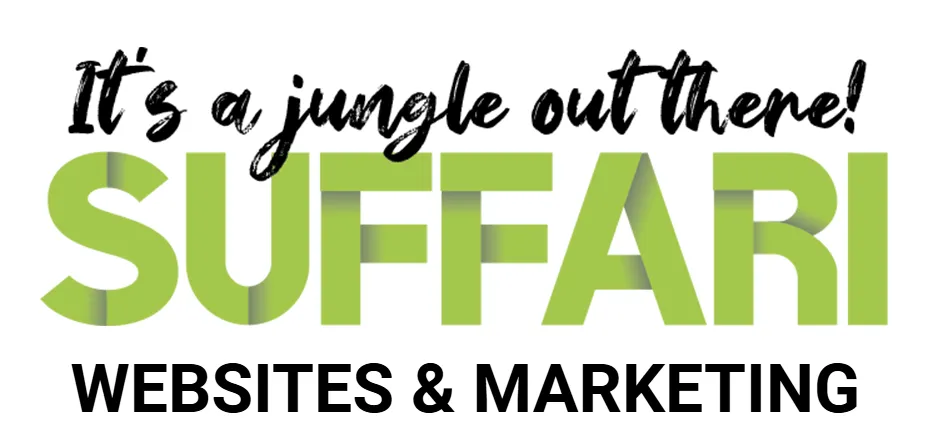

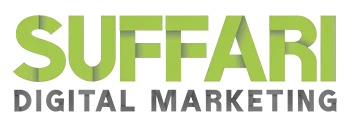


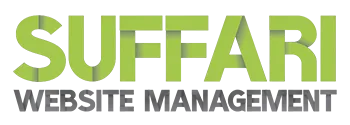




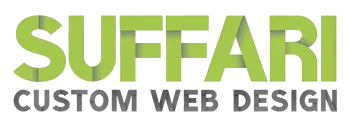
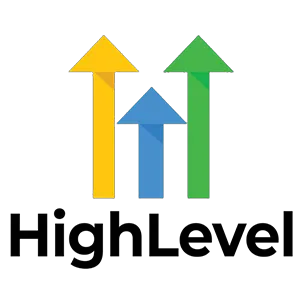
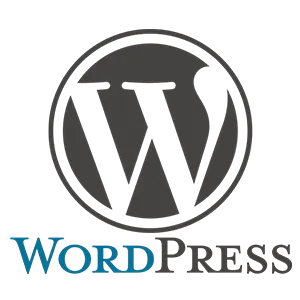
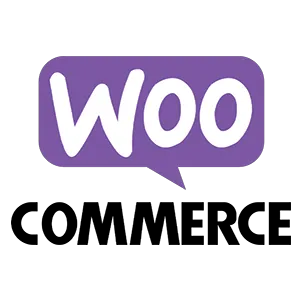


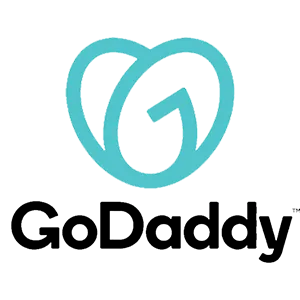

Youtube